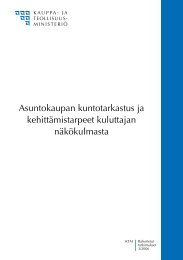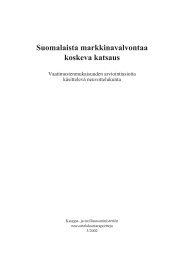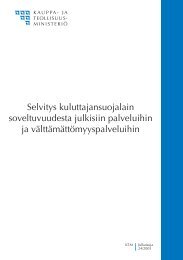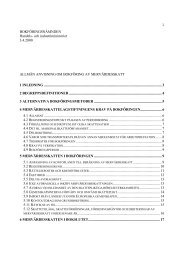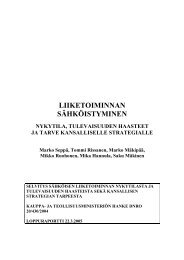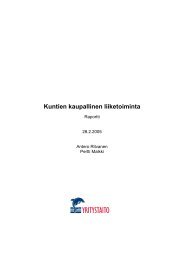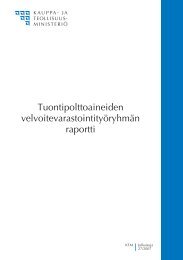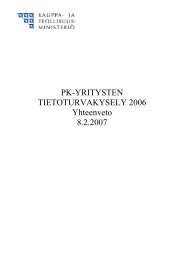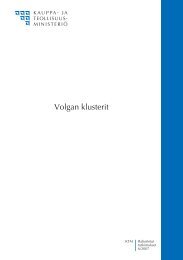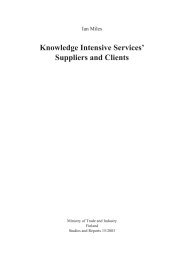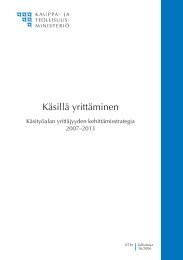Lainsäädännön kilpailuvaikutusten arviointi
Lainsäädännön kilpailuvaikutusten arviointi
Lainsäädännön kilpailuvaikutusten arviointi
You also want an ePaper? Increase the reach of your titles
YUMPU automatically turns print PDFs into web optimized ePapers that Google loves.
Executive Summary<br />
123<br />
The regulatory environment has an impact on both the birth and growth of the<br />
firms, and hence, also on employment. To meet the goals of the Lisbon strategy the<br />
European Commission has launched an action plan for better regulation with such<br />
means as the withdrawal or modification of pending legislative proposals as well<br />
as measures to simplify the existing legislation. The Commission aims also to improve<br />
the quality of new proposals by systematic use of impact assessment and public<br />
consultation in the development of new policy proposals. Unnecessary regulation<br />
creates costs for the firms, but it has also more a undesirable implication: distortion<br />
of market development. Therefore, better regulation and lighter administrative<br />
burden make the operations of firms more flexible and increase their willingness<br />
and ability to grow.<br />
The Nordic Countries have succeeded in creating a relatively good and stable business<br />
environment. However, the OECD has criticized Finland for insufficient<br />
use of impact assessment in preparations of legislative proposals. For instance, the<br />
development of consistent and flexible methods of analysis and integration of impact<br />
assessment to policy processes require special attention. As a reaction to this<br />
criticism the Finnish Government has conducted projects for enhancing the regulation<br />
environment. As a part of these measures, the Finnish Ministry of Trade and<br />
Industry financed this particular project with the purpose to develop further methods<br />
of competition impact analysis. This report reviews the competition impact<br />
analyses of legislative proposals, the role of impact analysis and also the timing of<br />
the analysis in the legislative work.<br />
Based on international experiences, it is obvious that an impact analysis should be<br />
an integral part of the very early stages of legislative work. If impacts are analyzed<br />
during the preliminary/preparatory legislative work, then it is possible to allow for<br />
these results to affect the final content of the decree. In reality, in legislative work<br />
the disposable time for thorough impact assessment is extremely limited. Therefore,<br />
there is a need for simple and time-sparing methods to evaluate the possible<br />
competitive impacts of legislative proposals. The challenge of the development of<br />
such a methodology can be set as follows: how one can condense the main ideas of<br />
the factors behind market competitiveness from the economic theory and how<br />
changes in these factors affect the welfare of the different stakeholders. By combining<br />
the recent results from competition research, international experiences and examples<br />
of impact assessment, we provide an alternative approach to rise to this challenge.<br />
As known, legislation or more specific regulation has both anticipated and unanticipated<br />
effects on the markets. In many cases the general outcomes of a regulation<br />
depend on the competition in the market, since adjustment of the objects of regula-



